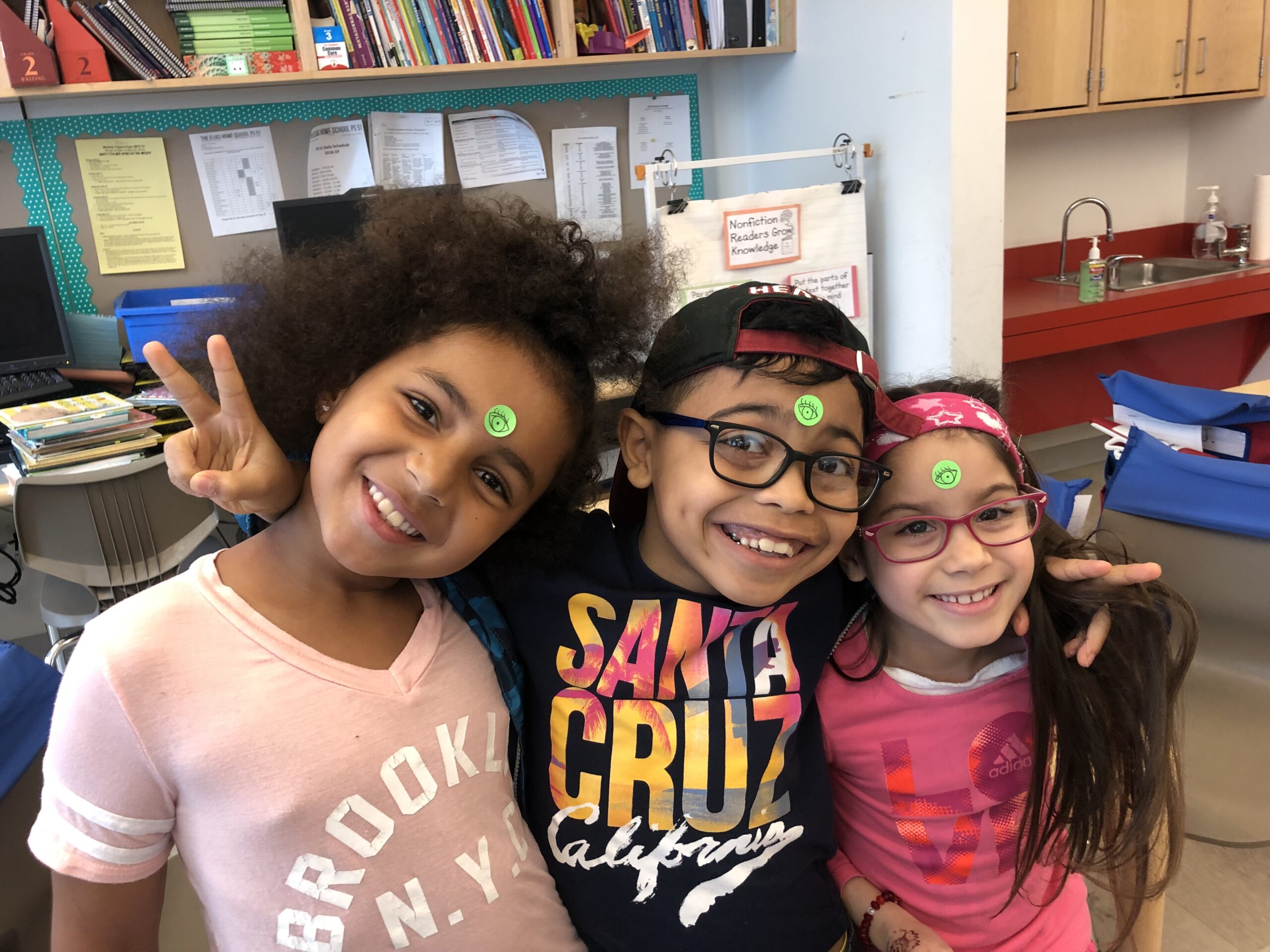Sarah Guayante, a student at St. John’s University and a T&W editorial intern, interviewed teaching artists who take part in the TATIP* program. Jose Lopez, a full-time English teacher and volunteer with House of Roses Volunteer Dance Company, attended the Movement seminar facilitated by Jenn Eisenberg and Emily Meisner of the National Dance Institute.
Teachers & Writers: How do you think your teaching affects your writing and vice versa?
Jose Lopez: I see myself in a lot of my kids. Working in homeless shelters and working as an English teacher, I see a lot of students getting an education who also have the same story. I see the children who got raised like I did, you know, who come from poor families. Looking back on my writing as a way to get out, I’m not inspiring my own writing, I’m inspiring others to write. Most of my experiences come from growing up and learning to deal with the differences between the social spheres, the pressures of being my Latino self and my educated self. A lot of these kids deal with that, too.
In my writing, I also look back at my childhood, and being around kids is pushing me back into where I was and where I am now.
T&W: You talked about using experiences to fuel writing. How do you push your students to use their own experience?
JL: One of my favorite go-to’s is an “I am” poem. I use this Willie Perdomo poem called “Where I’m From.” It’s a beautiful poem about Spanish Harlem, where I grew up. It’s very visual. It’s very violent. Towards the end, he’s like, “This is where I’m from. I couldn’t be from anywhere else.” I read that to my kids and they loved it. It took them back to the place that they’re from, they’re all from the Bronx, Hunt’s Point. I said, “Let’s write about the place that you’re from.” It was very graphic. I saw marijuana. I saw prostitutes. But, that’s where you’re from, this is your story. This is where you guys are, so be it. I felt that pride, that virtue, that power that I wanted to give to my kids.
T&W: When you’re in the classroom, what are the most important things about writing that you want to communicate to your students?
JL: Making mistakes is absolutely fine. That’s my number one thing. Everyone makes mistakes. Even in House of Roses, because they are dancing as well. We make mistakes; that’s just you getting them out. I tell my kids, “This is muscle memory.” Getting the idea that you are going to keep failing ‘cause you’re still learning in your system is important. You’re gonna keep failing, but once you recognize why you’re failing, you can face yourself. I’m there to help you. Everyone’s there to help you. That idea of repeated exposure, that idea that failing is okay, tripping over a word is okay, tripping over your legs is okay, because you’re just repeating the action, getting the movement in your memory, and getting the mistake out of your system.
T&W: In your experience, including your classroom teaching or at House of Roses, what does including arts education in the curriculum give to students?
JL: First and foremost, it gives them a way to express themselves because Common Core is pushing towards the informational idea: “Let’s just analyze this article blah, blah, blah…” Most of the curriculum is analyzing things. We’re not making things, we’re analyzing them. Arts education is really important because kids need to express themselves. Some kids can express themselves through writing. Other kids want to express themselves through art, music. That’s important for where I work at because most of my kids want to be rappers. Rapping and English, songwriting, go hand-in-hand. You can be a poet on the streets. You need that music, even if you can rap off the top of your head. There are some good things about Common Core, but kids need that outlet and they have that when arts education is there.
T&W: Was there ever a time at House of Roses when you saw that a kid was able to express themselves through dance where they couldn’t in other areas?
JL: I volunteer with this child, Michael, who struggles developmentally. He can’t talk well. He doesn’t dance well. But, it’s his way of expressing, you know? It’s his way of moving! And, he moves to his own beat and that’s perfect ‘cause it’s his movement.
T&W: How do you design your lesson plans? Is there any type of resources that you would recommend to others?
JL: Teachers Pay Teachers. You might have to pay for some things, but there’s some cool things there.
T&W: You said that a lot of your students like rap. What’s your go-to lesson plan for teaching them to write lyrics, poetry, and songs?
JL: One of my favorite ones is a Tupac poem called, “The Rose that Grew from the Concrete.” It’s about a rose. It says that if a rose grows out of the concrete, you’re not gonna care if it has scratches or scars. You’re gonna care that it grew out of the concrete, that it was able to grow out of the concrete. Most of my kids are like that. They grew up in concrete buildings and they have a chance with their rap game. It fits the Common Core because I’m having them analyze the poem—we’re analyzing imagery, we’re analyzing the poem, because it was a poem. But, it’s having them connect, seeing themselves in the text.
It’s the same idea with the first poem I was talking about [“Where I’m From,” by Willie Perdomo]. It’s got this Latin beat to it. You know, where I’m from streets are littered and I hear women yelling. It’s terrible, but I want the kids to connect to something from their lives and their experience. Their “I am” poem: I am from the streets of Hunt’s Point, I am from a place with marijuana, I smoke marijuana, I hear gun shots go pop, pop. The idea is that kids can express themselves like that at that age. They have that talent. It’s there.
T&W: How will what you learned in the TATIP Movement seminar with NDI inform your teaching? Is there something that stood out to you at the Movement seminar that you plan on implementing or that you have implemented?
JL: House of Roses is a non-profit that works with about six or seven homeless shelters throughout the New York City area. It’s closely aligned to the work we did at the dance seminar. Jenn Eisenberg was a volunteer at House of Roses a while back and she developed that curriculum, I’m pretty sure. A lot of what we did with breaking down the model, like doing the warm-up to get kids excited, our warm-ups are the same thing. Anyways, we’re working on performance, which is on May 20 at NYU, and some of the kids are having a hard time with the dance moves. In real time, seeing them [the NDI teaching artists] break down that technique for me and including me in the performance was helpful. That felt really good, so I’m gonna try to use that model breakdown.
One of the things I liked was during the second half when we created that piece out of people’s moves. I liked that, and we’ve done that before with our kids and I want to do it again. Our dance is kid-created. We take moves that these kids created, help to put them together, and perform it with them on stage. Having them create the choreography and seeing them work through the techniques of how to do it adds to my little reservoir. We break it down, now you see the steps, now let’s do it, hey!
T&W: Do you see that method being used anywhere as an English teacher?
JL: I remember that the first thing I commented on in the seminar was that we could model in terms of writing by using the same breakdown we were talking about in the workshop. Looking at this through the body (I’m a very kinesthetic learner) helped me to realize that I can break down things even further for my students. It’s cutting things down to the bare minimum. I taught a lesson on an acronym, which went totally wrong because the kids couldn’t get it. So, I broke it down even further, letter-by-letter, and they finally got it. So, seeing that done through the body, through dance, helps me to break things down even more for them.
*The “TATIP Cohort” is part of Community-Word Project’s eight-month Teaching Artist Training and Internship Program (TATIP). This select group of New York City arts education organizations is a partnership initiative to expand professional development not only for the TATIP students, but also for teaching artists working with these organizations. Our mission is to combine efforts to better prepare artists to bring arts to city classrooms. With professional development seminars that deconstruct the dynamics of teaching artistry in a variety of settings and focus areas, the January-May Saturday sessions are geared towards developing new ways of stimulating creativity and understanding in students.
The TATIP Cohort partners with Community-Word Project include:
Brooklyn Arts Council
Center for Arts Education
DreamYard Project
FreeArts NYC
MagicBox Productions
Marquis Studios
Maxine Greene Center
National Dance Institute
New Victory Theatre
Teachers & Writers Collaborative
Wingspan Arts
Voices Unbroken
Teachers & Writers Magazine is published by Teachers & Writers Collaborative as a resource for teaching the art of writing to people of all ages. The online magazine presents a wide range of ideas and approaches, as well as lively explorations of T&W’s mission to celebrate the imagination and create greater equity in and through the literary arts.



